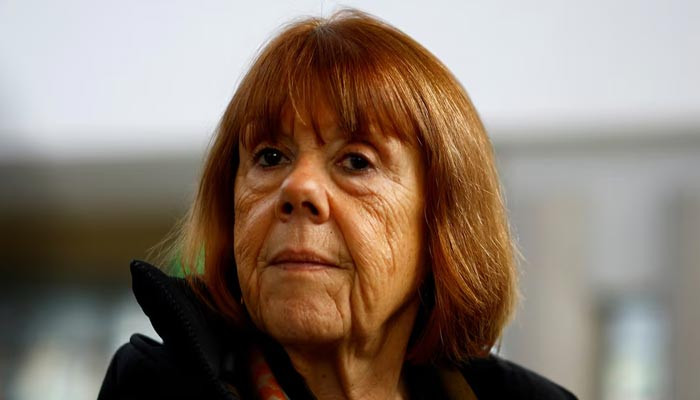Sports
Buried and forgotten history
字号+ Author:Smart News Source:US 2025-01-13 07:44:34 I want to comment(0)
FOR the longest time, archaeologists forever in search of lost civilisations used to walk the earth, and map and dig areas where they believed ancient settlements had once existed and now lay buried under centuries of sediment and overgrowth. Sometimes, discoveries were made inadvertently, as in the case of the magnificent Lascaux caves of France, which were found by a group of teenage boys walking in the forest with their dog in 1940. Another example is that of Pompeii, which was covered in ash from Mount Vesuvius when it erupted in 79 AD. Its location was discovered in the 16th century during work on a canal. The find was stunning: volcanic dust and lava deposits had ‘frozen’ Pompeii in time. Some corpses were found in cowering and crouching positions, just as they had been in their last moments before perishing under a heavy rain of volcanic ash. Everything, from children’s toys to food containers, had been preserved, providing a picture not only of the tragedy that occurred so long ago but also of what life was like at that time. Pompeii remains one of the most visited archaeological sites today, so much so that that the authorities have had to lately limit the number of visitors to the World Heritage Site out of fear of over-tourism. Perhaps among the most bizarre incidents in this category of inadvertent finds was the discovery of the catacombs of Alexandria, Egypt. The ancient Greco-Roman necropolis was discovered when a donkey fell through a hole in the ground. Archaeology, however, has changed drastically since the days when luck and a little bit of knowledge helped explorers and archaeologists unearth some glorious object or a structure that indicated the prior existence of a bustling settlement. Archaeologists relied more on maps, ancient texts, geographical alignments, and surface finds. Without the resources of the modern age, archaeology was a calling and reflected the determination of the human spirit to excavate its way to the deep recesses of the past and bring to life all that was part of local lore and historical tracts. It was this restlessness that led Heinrich Schliemann to unearth the Homeric city of Troy and collect ‘Priam’s treasure’, consisting of a large haul of diadems, rings, earring, daggers and swords. From maps and pickaxes, it is now possible to discover ancient relics from a distance, as in the case of a recent find. Overcoming the odds, archaeologists braved difficult terrains, disease and ancient curses. In areas such as South and Central America, with their heavily forested landscape in many areas, digging was difficult and archaeological methods were labour intensive. Armed with their shovels, archaeologists relied on maps and local knowledge. It was thus that Hiram Bingham chanced upon Peru’s Machu Picchu, now one of the New Seven Wonders of the World. Archaeology has taken many steps forward. From maps and pickaxes, it is now possible to discover ancient relics from a distance, as in the case of a recent find. Luke Auld-Thomas, a PhD student, made a mind-blowing discovery while looking at aerial Lidar (light detection and ranging) images of the Mexican state of Campeche. Lidar, a remote-sensing technology, can look through heavily forested areas that are covered by vegetation to deliver images of structures from long ago. Archaeologists may not have access to the technique unless they have credible indication of the existence of some past settlement in the area. However, in many cases while archaeologists may not have the budget, people looking for other things, such as scientists or conservationists and land surveyors, may already have Lidar studies of a particular region. It was one such study done all the way back in 2014 and commissioned by the Nature Conservancy of Mexico that Luke Auld-Thomas was poring over when he made the discovery of a lifetime. Through the Lidar images, Auld-Thomas could piece together the remains of what has been described as “a huge ancient city which may have been home to 30-50,000 people at its peak from 750 to 850 AD”. It also contains thousands of structures. Auld-Thomas and his team have named the city ‘Valeriana’. Auld-Thomas has said that he had been looking through the images because he felt that casting about in the region known to have been populated by the ancient Mayans would eventually yield a discovery. No doubt, it was quite something to be the actual person to have made the discovery. He is the lead author of an article on the lost city, which appeared in the journal Antiquity recently. The impressive nature of Luke Auld-Thomas’s work lies not only in that he made the discovery but that he used what he had access to — in this case, old Lidar maps from a decade ago — to see if he could find anything that would substantiate the view that Mayan cities were often interconnected and spread over large areas which did not exhibit the same level of population density. The discovery of the new city will yield a treasure trove of information about how the ancient Mayans lived, what they believed, and how they understood the world around them. Junior researchers have a high bar to clear in that their relative lack of power means that they would never have the capacity to find the funds to commission a high-tech study on their own. Clearly, that did not deter Luke Auld-Thomas and it should not deter others who pursue discovery and are often thwarted by doubters who think everything worthwhile either requires a huge budget or has already been discovered. In this sense, the ancient city of ‘Valeriana’ will not only reveal truths about a civilisation that disappeared long ago, but will also make us appreciate the spirit within us which charts new courses and makes new discoveries.
1.This site adheres to industry standards, and any reposted articles will clearly indicate the author and source;
 Related Articles
Related Articles-
Protecting Chinese investments
2025-01-13 06:38
-
لندن میں سائم ایوب کا طبی علاج
2025-01-13 06:29
-
ویسٹ انڈیز 18 سال بعد ٹیسٹ سیریز کے لیے پاکستان پہنچ گئی۔
2025-01-13 05:40
-
امریکی صدر بائیڈن کی صدارتی اعزاز کی تقریب میں لیونل میسی کی عدم شرکت
2025-01-13 05:07
 User Reviews
User Reviews Recommended Reads
Recommended Reads Hot Information
Hot Information- 65 killed across Gaza in a day as Israel’s offensive rages on: ministry
- نیراج چوپڑا نے بھارتی کھلاڑیوں کو ڈوپنگ سے پرہیز کرنے کی نصیحت کی ہے۔
- امریکی صدر بائیڈن کی صدارتی اعزاز کی تقریب میں لیونل میسی کی عدم شرکت
- امریکی صدر بائیڈن کی صدارتی اعزاز کی تقریب میں لیونل میسی کی عدم شرکت
- Petrol prices to remain unchanged for next fortnight
- ویسٹ انڈیز 18 سال بعد ٹیسٹ سیریز کے لیے پاکستان پہنچ گئی۔
- ویسٹ انڈیز 18 سال بعد ٹیسٹ سیریز کے لیے پاکستان پہنچ گئی۔
- نیراج چوپڑا نے بھارتی کھلاڑیوں کو ڈوپنگ سے پرہیز کرنے کی نصیحت کی ہے۔
- JI rejects dollar-based power generation tariff for KE
 Abont US
Abont US
Follow our WhatasApp account to stay updated with the latest exciting content












